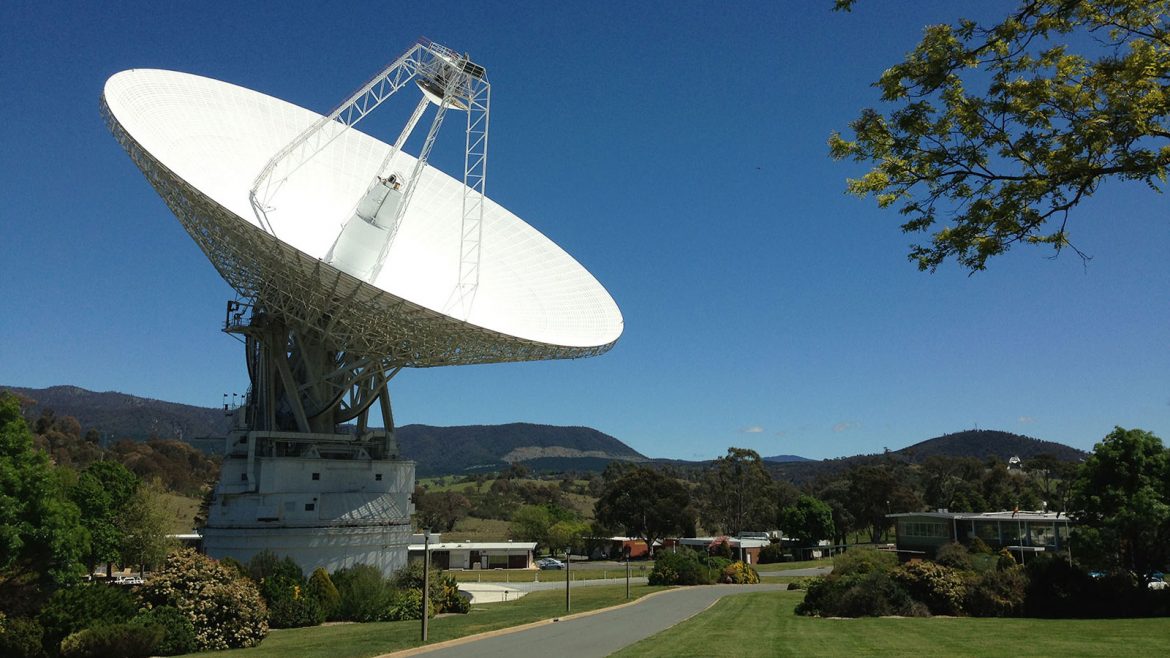Spacecraft are essential for Space Explorations6, but how do spacecraft talk to Earth from billions of miles away? They use a sensitive deep space network (DSN). You can see the live DSN status here7, but please don’t mix it up with DNS, a server that turns an address into an IP.
Basic Features
In reality, the deep space network isn’t just one but three systems distributed evenly around the world. They are in California, USA, Madrid, Spain, and Canberra, Australia, respectively. So, why did NASA choose this specific combination? Well, that is because the agency needs to make sure that before a receiver sets below the horizon, another receiver already appears in the spacecraft’s sky. That ensures thorough communication with no gaps.
Then, how about the antennas that are operated by the JPL? Well, they come in different sizes. There is a 70-meter antenna on each receiver, which are the big antennas on the map, and at least three 34-meter small antennas, which are the small antennas on the map. They are so huge because they need to pick up tiny signals, not even a fraction of a watt. They also need special equipment to distinguish the spacecraft signals from other noise.

To find out the source of this image, please go to https://eyes.nasa.gov/dsn/dsn.html
The History and the Purpose
As mentioned before, the Deep Space Network is used for communication, but that’s not all, because it is built early on, back in 1961. In 1958, NASA had just launched the Explorer 1 satellite and successfully tracked its trajectory. However, NASA wanted a more modern system, so they officially established the DSN.
Without the hardworking DSN antennas, we wouldn’t know the majority of the knowledge about space. That’s because all data retrieved from spacecraft passed through the DSN before being analyzed by JPL. Until today, the DSN is still state-of-the-art, despite being more than 50 years old. So, be grateful that it exists and serves lots of people around the world.
References, Credits and Links
- (2020, March 30). About the Deep Space Network | NASA. Retrieved November 5, 2020, from https://www.nasa.gov/directorates/heo/scan/services/networks/deep_space_network/about
- (n.d.). NASA Deep Space Network – Wikipedia. Retrieved November 5, 2020, from https://en.wikipedia.org/wiki/NASA_Deep_Space_Network
- (2020, March 30). DSN History | NASA. Retrieved November 5, 2020, from https://www.nasa.gov/directorates/heo/scan/services/networks/deep_space_network/history
- (2020, March 4). NASA’s Deep Space Antenna Upgrades to Affect Voyager Communications – NASA Jet Propulsion Laboratory. Retrieved November 5, 2020, from https://www.jpl.nasa.gov/news/news.php?feature=7611
- (2016, March 10). Deep Space Network (DSN) | NASA. Retrieved November 5, 2020, from https://www.nasa.gov/directorates/heo/scan/services/networks/dsn
- https://www.centralgalaxy.com/category/space-explorations/
- https://eyes.nasa.gov/dsn/dsn.html

